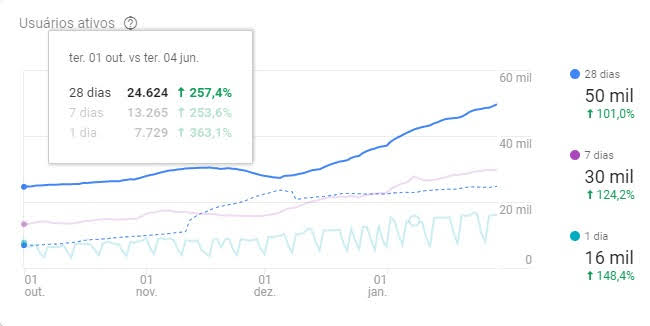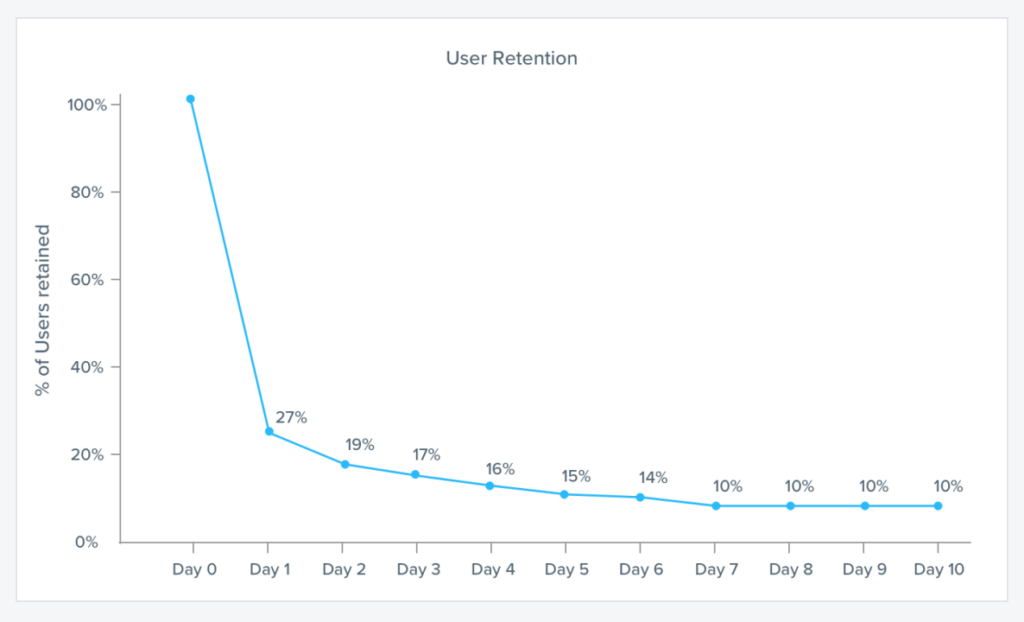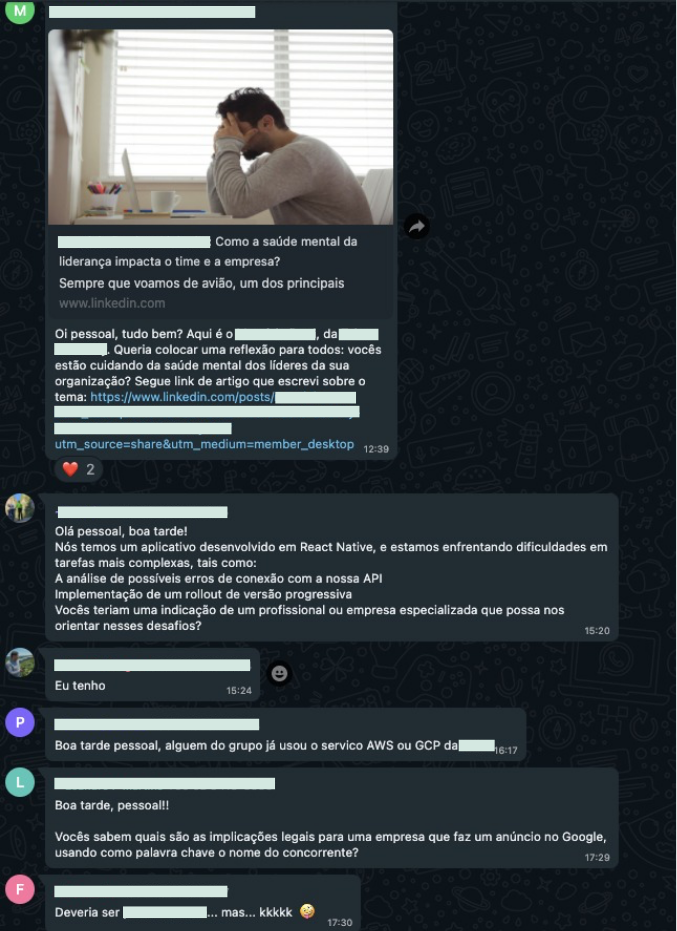Everyone who has a communitywants more engagement. Today I propose a different approach. First, let's understand in depth how to measure engagement through stickiness and then how to increase it with 5 practical tips.
What it is engagement
Engagement is the level of interaction, involvement and participation of a user with a product, service, brand or community. It reflects how active and interested the user is in using or interacting with something. On digital platforms, the engagement is measured by the actions of users, such as comments, likes, shares, accesses, and any behavior that demonstrates that the user not only consumes the content, but engages with it.
O engagement is an indicator of success and relevance. When a user is engaged, it means that they see value in the product or in the community and is more likely to continue using it, recommend it to others and become a loyal user.
If you have engagement in your communitya group, online course, etc. means that customers are extracting value from it.
That's a very nice explanation, but it's not at all actionable.
That's why I wrote today's text.
I want you to finish reading this text knowing exactly HOW to measure the engagement of your product/service and how to work to increase it.
Important concepts before continuing
Before moving on to the secret of how to measure engagementwe need to borrow two concepts from the world of startups: Dau and Mau.
If you already know these concepts, skip to the next section.
Dau
Dau stands for Daily Active Users and is used to measure how many people interact with a product or service in a single day. "Active user" refers to someone who performs a significant action, such as logging in, sending messages, watching videos, or any other interaction that demonstrates use of the product.
Bad
MAU, from English Monthly Active Users (Monthly Active Users), is a metric used to measure how many people interact with a product or service over the course of an entire month.
Let's use the same example of an online course with 5,000 students. If, over the course of a month, 2,000 of those students access the platform and watch a lesson or interact in some way, your BAD would be 2,000. This means that in a 30-day period, 2,000 students were actively using the service.
Although Dau and Mau are good metrics, they don't do a very good job of measuring engagement.

Stickiness: measuring engagement
Products that need a lot engagement to work as well as social networks and chat applications use stickiness as the main metric monitoring.
This is because the SAD has a very large variance, which makes a metric unreliable on its own.
MAU doesn't have this variance, but it does bring a myopic view of the whole. Want to see?
Think of two apps. Both have 30 registered users.
In application 1, each of the 30 users enters the application once a month. He has a Bad of 30.
In app 2, all members use the app every day. This app also has Mau of 30.
There is a huge difference in engagement between them, but their BAD is the same: 30.
O Stickiness helps to show the real difference between the two.
Stickiness = (DAU/MAU) x 100
O stickiness of the first is 1/30 = 3.33%.
O stickiness of the second is 30/30 = 100%. One engagement perfect.

Why look at stickiness
O stickiness is a metric crucial because it goes beyond simply counting how many people are in the group, it focuses on how many people are actually engaged.
The number of members in a WhatsApp group is not synonymous with engagement. In fact, many groups become less engaged when they grow too large.
One stickiness High, on the other hand, indicates that the group has a daily relevance, and that members see value in being there actively. This metric is particularly useful for administrators who want to optimize communication and strengthen the community.
The DAU/MAU ratio gives you a clear picture of how many people are participating regularly, and not just sporadically.
As WhatsApp groups are, by their nature, communities of rapid communication, measuring only the number of members or messages sent doesn't tell the whole story. O stickiness measures the frequency of return to the group, and is a solid indicator of how relevant and engaging the content is for the participants.
It reflects both the quality of the conversations and the proximity of the members to the community.
Difference between stickiness and retention
Stickiness e customer retention are similar concepts, but have distinct differences.
Customer retention refers to a company's ability to retain its customers over time. It is measured as a percentage of customers retained within a specific period. It focuses on the total customer base and the percentage of customers retained, looking at actual customer behavior and loyalty in the past.
Customer retention tells you how many customers remain, but not necessarily why.

On the other hand, stickiness shows how much the customer uses/buys the product in question. Stickiness usually works as a metric which provides for retention.
This is because when stickiness is high, retention usually remains high. When stickiness begins to fall, retention is likely to take a hit in the near future.
How to increase stickiness of your group
Creating challenges
These challenges keep members active and interested, creating a routine of participation.
How to do it:
- Define a relevant topicChoose something related to the group's purpose, such as a challenge to share tips, ideas or results.
- Establish clear rulesExplain what members should do, such as sending a reply or sharing something specific.
- Use remindersDuring the week, send out reminders to ensure that participants don't forget to contribute.
- Offer rewardsIt could be something simple, like recognition in the group, or even a symbolic award.
Example: In the entrepreneurs' group, you could do the "Pitch Challenge", where each member sends in a 60-second pitch about their business idea. At the end of the week, everyone votes on the best pitch.
Ask for feedback with polls
This encourages participation and helps to better understand the needs of the group.
How to do it:
- Define a relevant questionChoose a question that relates to the group's interests, such as feedback on a topic discussed or an opinion on a new idea.
- Use poll toolsIn WhatsApp itself, create a quick poll with answer options to make it easier to participate.
- Share the resultsAfter the vote, share the results and show how the answers will influence decisions or new content in the group.
Example: Ask members what topic they would like to discuss next week. This helps to adapt the content and ensures that the group remains interesting for everyone.
Promote UGC (user generated content)
Encouraging group members to create and share their own content is a great way of increasing the engagement and a sense of community.
How to do it:
- Propose topics of interestSuggest topics for members to create content, such as sharing tips, experiences or stories related to the group's theme.
- Create moments to share: Establish specific days of the week when members can post their content, such as "Knowledge Thursday".
- Recognize the best contributions: Highlight the most useful or interesting content, either with praise or even a special mention in the group.
Example: In a group of marketing professionals, encourage members to share a marketing tactic that has worked for them. This motivates the exchange of ideas and strengthens interaction.
Important: Be careful that this doesn't get out of hand and start turning into spam and self-promotion.
Useful questions
Asking direct and relevant questions in the group is an effective way of generating discussion and increasing engagement.
How to do it:
- Ask about experiences or opinionsChoose questions that encourage members to share their experiences or opinions on a topic relevant to the group.
- Create regular discussions: Ask frequent questions, such as a "Question of the Day" or "Question of the Week", to keep the group active.
- Involve all membersEncourage participants to answer and discuss each other's answers, promoting an exchange of ideas.
Example: In a finance group, ask "What's the biggest financial learning you've had in the last 6 months?" to generate meaningful conversations and involve all members.
Create themed days
Establishing themed days in the group is a great way to keep members involved with a regular and predictable schedule.
How to do it:
- Define relevant themesChoose themes that make sense to the group, such as "Motivation Monday" or "Tool Friday".
- Create a routineBy establishing fixed days for each theme, members will begin to anticipate and actively participate.
- Stay consistent: Be consistent with theme days to create an expectation and habit among participants.
Example: In a technology group, you could have "Tech Tips Tuesday", where members share tips on useful tools or technologies.
Important: For style points, use words with the same letter. Gringos love to do this. "Meatless Monday, Taco Tuesday, Wing Wednesday.
(I always spend hours thinking about how to make the name cool, but I never manage 🙁 )
What to do when engagement out of control?
WhatsApp works very well for creating communities. But there's a problem: it can be so good that it goes wrong.
This is what happens when stickiness is so high that it's becoming difficult for members to keep up.
The conversations begin to pile up one on top of the other.
And that begins to play against engagement.
That's where Scarf comes in.

More organization
Scarf is a platform for creating community in a post and comment format, unlike WhatsApp's message feed format.
With Scarf, you can organize community on different subjects. Each subject is discussed within specific posts and it is possible to reply to comment after comment.
Everything is much more organized.
More engagement
A common fear of group owners is that the engagement could fall if they migrate to community out of Whatsapp, because members open Whatsapp several times a day.
But Scarf has a solution for that too. There is an integration with a Whatsapp group that makes any post made on the community becomes a notification in the group itself with the link to the comment.
More recognition for members
Another thing that gets out of hand in a highly engaged group is the recognition of who makes the most relevant contributions. On WhatsApp, there comes a time when the member with the highest contribution starts to get bored of answering questions that have already been asked.
At Scarf, there is a ranking of engagementThis is measured by the number of likes a person receives.
The winner of this competition is the member who has their questions answered most often.
If your group has more than 100 members and it's getting difficult to keep up with the messages at the end of the day, take a look at Scarf before the group begins to suffocate from too much engagement.
What is the Zap Score
O Zap Score was an initiative by Scarf to help Whatsapp group owners understand when it's possible to improve the engagement of the group.
WhatsApp has started to be used by many infoproducers to create their communities. This is where students exchange ideas, ask questions and look for vacancies.
Peter Drucker used to say that "Those who don't measure, don't manage".
Today it is very difficult to "measure", which makes "managing" a whatsapp group an equally complicated task.
Zap Score is Scarf's attempt to help Whatsapp group owners who need a report on their performance. engagement of their groups.
Limitations
The method for calculating Stickiness using the Zap Score uses sent messages as the event to define that a user is active.
In other words, Zap Score ignores people who read all the messages exchanged in the group. It only takes into account those who speak.
It would be great to be able to measure the people who read it too, but the file format exported by WhatsApp itself doesn't carry this information.
If you want to have a community with more refined reports, consider migrating your community from Whatsapp to Scarf.